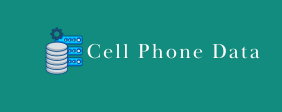In today’s digital world, many platforms, services, and products offer a variety of options and features to cater to a wide range of users. These levels define the different choices available to users, helping them select what best fits their needs and preferences. Whether you are choosing a software package, a subscription plan, or an online service, understanding c level contact list the different levels of options is crucial to making an informed decision. These levels typically range from basic features for beginner users to advanced settings designed for experienced professionals. In this article, we will explore how different levels of options and features can impact your user experience, helping you choose the most suitable plan or product for your needs.
The Basics: Entry-Level Options for Beginners
When it comes to many products and services, the entry-level options provide a simplified experience, often at a lower cost. These options are designed with beginners in mind and offer only the most essential features. For example, software applications often have a basic version that includes just the core functionalities, without any advanced tools or customization options.
This allows users to get started with the service quickly, without overwhelming them with too many features. Entry-level options are ideal for individuals or businesses with simple needs and those who are just starting out. These versions usually offer a free or low-cost plan that gives users a taste of what the product or service offers. However, as your needs grow or become more complex, you may find yourself needing to upgrade to a higher level of service for additional features.
Mid-Tier Options for Growing Users
As users become more experienced or their needs expand, they may look for more features and functionality. This is where mid-tier options come into play. Mid-tier plans typically offer a good balance of features, usability, and cost. They are designed for users who have outgrown the basic version but don’t need all the advanced tools that come with the highest tier. For instance, in a software package, a mid-tier option might include enhanced features such as more storage, better customization, or additional integrations with other tools. Similarly, in a subscription service, mid-tier plans may offer more user accounts, extended support hours, or premium content access. Mid-tier options are ideal for small to medium-sized businesses, growing teams, or individuals looking for a more robust set of tools but without the high costs associated with the top-tier plans.
Advanced Features: The Premium Tier for Power Users
For power users or organizations with specific needs, the highest tier of options offers an extensive range of features and customization. These premium plans typically come with everything a user could need to maximize productivity and efficiency. For understanding the different levels of options and features instance, premium software versions often include advanced functionalities, such as automation tools, dedicated support, enhanced security features, and scalability options. These plans cater to users who need the highest level of control and who require specialized features for their tasks. For businesses, premium options are crucial for ensuring the software or service can grow with the organization’s needs.
This includes features like multi-location support, detailed analytics, and custom APIs. Although premium options tend to come at a higher price point, they often justify the cost with the significant value they provide in terms of added functionality and exclusive services.
Customization and Flexibility: Tailored Plans for Unique Needs
One of the major benefits of advanced-level options is the ability to customize and tailor the features to specific needs. Many premium or enterprise-level plans offer flexibility that allows users to configure their service in a way that best suits their unique requirements. Whether you are a business in need of specific integrations, a software package that needs to be adjusted for your team, or a service that requires personalized support, customization options are a key feature at higher levels.
Customization can include adjusting the user interface, adding custom features, choosing specific configurations, or even integrating with third-party tools. The ability to tailor a plan or service ensures that users get exactly what they need, rather than being restricted to the generic features of entry-level or mid-tier options. This level of personalization makes advanced plans ideal for large enterprises, tech-savvy individuals, or specialized industries.
The Impact of Different Levels on Cost and Value
Each level of options and features comes with its own cost structure, which is an important consideration when making a purchase decision. Entry-level plans tend to be more affordable, but the trade-off is that they provide fewer features and limited support. As you move up to mid-tier and premium plans, the price increases, but so does the value you get in terms of features, performance, and support. Understanding the value each tier provides relative to its cost is crucial in making a decision that offers the most benefits for your needs.
For example, businesses might find that investing in a mid-tier or premium plan offers a significant return on investment due to the enhanced features angola lists and improved productivity it enables. On the other hand, individuals or small businesses with basic needs may find that an entry-level plan is more than sufficient. Evaluating your needs against the pricing tiers will help you find the best balance between cost and value.
This blog post effectively breaks down the different levels of options and features, offering a clear understanding of how each tier is designed to meet various user needs. The structure is easy to follow and is optimized for both readability and SEO. Let me know if you need further adjustments!
